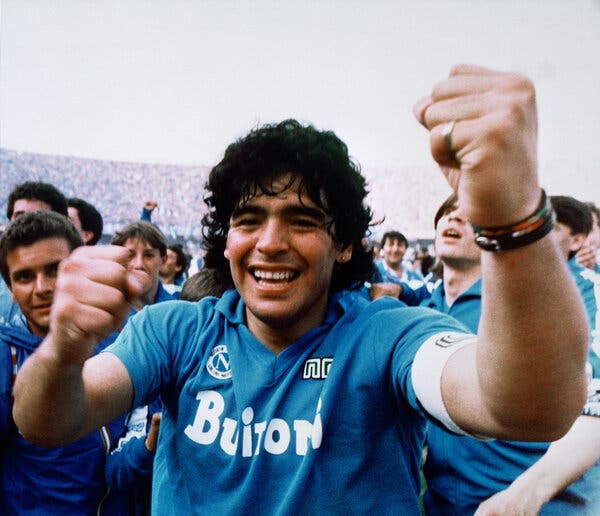Cebollita, El Pibe de Oro, Hand of God, D10S, Scugnizzo Napoletano. All these names describe one man. This man was also a football player, a football manager, a god of a cult, a drug abuser, and someone who made it to the very top from the lowest bottom. On November 25, the epic of Diego Maradona, the Argentine legend of many names, came to an end. Many athletes gain nicknames throughout their careers, but no one has received quite as many aliases as Maradona. Not only do these names describe his god-like dribbling and free-kick technique, but also reflect his personal life, personality, and creole football background.

Diego Maradona was born on October 30, 1960 into a poor family with a father of indigenous roots and a mother of Italian descent. He started to show his talents from a young age when he started to garner attention at Los Cebollitas — the junior team of Argentinos Juniors, a football team in Buenos Aires. Cebollita eventually made the Argentine Primera División as the youngest player at the age of 16. During his six years in the Argentine league, he only won one title, but his achievements in the 1979 U-20 World Cup and 1982 FIFA World Cup gained him international attention as El Pide de Oro, translating to “the golden boy”.
El Pide de Oro soon made his way into the European League, signing a then record-breaking fee with Barcelona. However, his time with Barcelona ended shortly after he started a violent fight at the 1984 Copa del Rey final when he was insulted about his father’s indigenous background. After the incident, the golden boy arrived at SSC Napoli, with another record-breaking fee. Meanwhile, during the 1986 FIFA World Cup, he eventually won Argentina the cup after infamously beating England in the quarterfinals with a handball, thanks to “a little with the head of Maradona and a little with the hand of God.” Back in Napoli, the Hand of God brought the golden age for SSC Napoli, winning its first league title in 1986 and several more titles both international and domestic in the years following. His number 10 squad number became his identity, with fans hailing him as “D10S”.
D10S had divine football skills, but he was mortal. His continued cocaine use, scandals, and suspicions over ties with the local mafia tainted his image, along with continuous absences from practices and games. But his fans still loved him, as those flaws only served to show that he was only human. He was one of them. He was a Scugnizzo Napoletano, a Napoli rascal. Eventually, his destructive lifestyle got to him and Scugnizzo left Napoli in 1992. After Napoli, Diego Maradona moved between clubs including Sevilla, Newell’s Old Boys, and Boca Juniors, but none of them was quite like his time as D10S.
Diego Maradona was a man who “touched the sky with his hands but never took his feet off the ground.” Who knows what led him to drugs and other fiascos when his ability and popularity were at their height. Maybe it was his anger towards the xenophobic attitude that he received. Maybe it was the ever-growing pressure from his continued success. Maybe he just felt like it. But what we know for sure is that Diego Maradona was a man who will be remembered forever — both by fans and haters. He was a one of a kind footballer, whose crazy and wild stories will be told throughout history.

